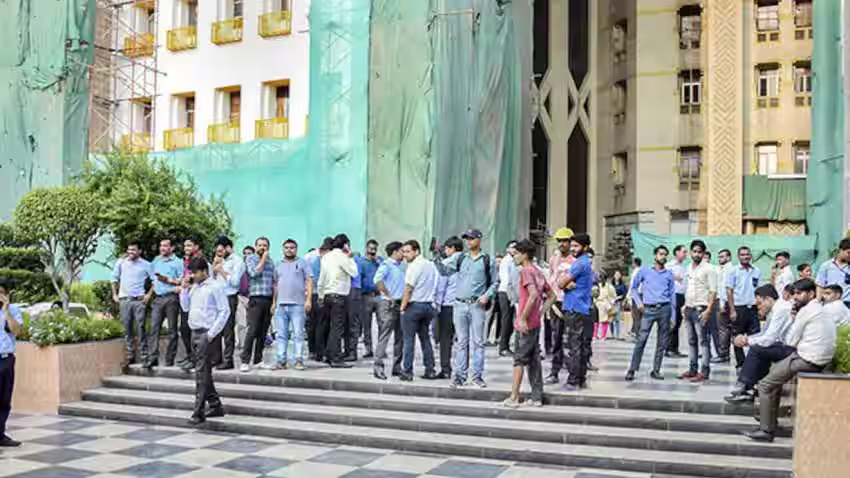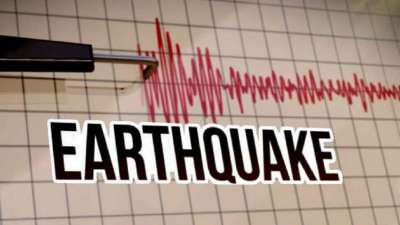Early on Monday, February 17, 2025, residents of Delhi and the National Capital Region (NCR) woke up to unexpected tremors. A 4.0-magnitude earthquake struck at 5:36 AM, causing momentary panic and raising fresh concerns about the city’s vulnerability to seismic activity. While no major damage or injuries were reported, the incident serves as a crucial reminder of the importance of earthquake preparedness in the region.
Immediate Effects and Damage Assessment
Despite widespread tremors across Delhi, Noida, and Gurgaon, the earthquake did not cause significant destruction. However, residents of high-rise buildings experienced the shaking more intensely, leading to brief moments of alarm. Emergency response teams remained on high alert, ready to intervene if needed. The structural integrity of the city’s buildings, which withstood the tremors without notable damage, offers some reassurance. Nevertheless, this event highlights the need for continued vigilance and preparedness.
Delhi’s Seismic Risk: Understanding the City’s Vulnerability
Delhi is classified under Seismic Zone IV, indicating a high risk of earthquakes. Earthquakes in this region typically range between magnitudes 5 and 6, with the potential for stronger tremors.
The city’s susceptibility to earthquakes is largely due to its proximity to the Himalayas, where the Indian and Eurasian tectonic plates continuously collide, generating seismic activity. Additionally, local fault lines, such as the Mahendragarh-Dehradun Fault and the Sohna Fault, contribute to the possibility of earthquakes within the region.

A Look at Delhi’s Seismic History
The recent earthquake is not an isolated event; Delhi has experienced multiple tremors in the past. One of the most significant recorded earthquakes in the region occurred in 1960, demonstrating the potential for powerful seismic events.
More recently, in 2020, a series of minor earthquakes with magnitudes between 3.3 and 4.4 rattled the region, serving as a reminder that Delhi remains seismically active. Such occurrences emphasize the ongoing need for enhanced disaster preparedness measures.
Strengthening Earthquake Preparedness: Community and Government Initiatives
The latest earthquake underscores the necessity of robust earthquake preparedness strategies. Delhi has taken steps to mitigate risks through various initiatives:
- Community Awareness Programs: Public training sessions and awareness campaigns educate residents on how to respond to earthquakes safely.
- Government Measures: Programs like the National Seismic Risk Mitigation Programme (NSRMP) focus on strengthening infrastructure and improving public awareness, while the National Disaster Management Authority (NDMA) conducts regular workshops to enhance emergency response capabilities.
- Building Regulations: Strict building codes aim to ensure that new structures are designed to withstand seismic activity. However, rapid urbanization poses challenges in enforcing these regulations uniformly.
- Early Warning Systems: Scientists are developing early warning systems that could provide critical seconds of advance notice before an earthquake strikes, though these systems are still in progress.
Preparing for the Future: Lessons and Challenges
Although today’s earthquake did not result in significant damage, it reinforces the need for sustained efforts to improve earthquake readiness. Key focus areas include:
- Public Awareness: Residents must be educated on safety protocols and emergency preparedness strategies.
- Structural Safety: Retrofitting older buildings and ensuring new constructions comply with earthquake-resistant designs is essential.
- Emergency Response Planning: Regular earthquake drills and updated response plans can enhance the city’s ability to manage larger tremors effectively.
- Urban Planning: Future development should prioritize earthquake resilience in infrastructure and public spaces.
- Scientific Research and Monitoring: Continuous study of seismic activity will help in better understanding and predicting potential risks.
Conclusion
While today’s earthquake in Delhi was minor, it serves as a timely warning of the city’s seismic vulnerability. With Delhi’s rapid growth, prioritizing earthquake preparedness is crucial. By reinforcing infrastructure, increasing public awareness, and advancing research, the city can enhance its resilience against future seismic events.
In an earthquake-prone region like Delhi, the question is not whether another earthquake will occur, but when. Proactive planning and preparedness are the keys to ensuring safety and minimizing potential damage in the future.


















